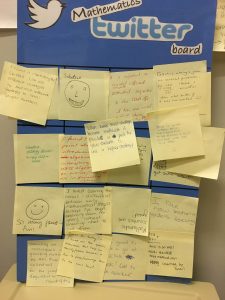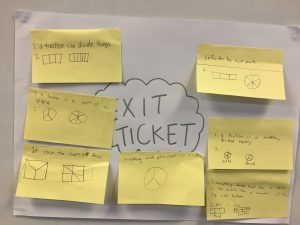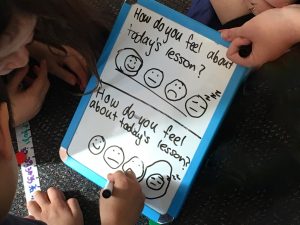It’s Education week for 2019! All NSW Public Schools are celebrating Education week this week (first week of August) with the theme of ‘every student, every voice’. It’s a chance for schools to share their successes and values within their communities and generally involves school events, performances, open classrooms and numerous opportunities for students to communicate and showcase their learning.
It is a celebration of student empowerment and how the NSW public education system gives students the skills they need in order to have and express a voice during their own educational journey and as engaged global citizens.
NSW Department of Education
As mentioned above, the theme for this year is ‘every student, every voice’ and the Department’s website for Education Week has advice and tips on ways to prepare for, and celebrate throughout the week. They have also curated a teacher toolkit of activities schools can run during Education week. This section is great and includes ideas like; engaging with parents, launch day actions, and curriculum-linked literacy lessons. However, there is a lack of any activities or lesson ideas linked to numeracy. This blog includes some suggestions for incorporating the theme of ‘every student, every voice’ into numeracy contexts.
The integration of student voice in teaching orchestrated by the teacher is a characteristic of effective pedagogy linked to the development of student thinking.
Kaur, Anthony, Ohtani & Clarke (2013), The Learner’s Perspective Study: Student voice in Mathematics classrooms around the world
Student voice is an important, in fact, probably the most important aspect of teaching. If our teaching is not reflective of (and in response to) our student’s ideas, voices and thinking, then are we actually teaching at all? Explaining and telling students what they ‘need to know’ can creep in to our classroom practice when we forget that it’s not our teaching journey but our student’s learning journey that should be the main focus. Annette and I have written a number of blogs and resources in the past regarding student voice that you may like to read for ideas and advice. A few include; Valuing student voice in mathematics, Investing in our students (blog), Investing in our students – student voice (resource) and What will my students like? Ask them!. You can also simply search our site for student voice and a number of other matches will also appear along with these links.
Below are a few classroom ideas to support student voice with a focus on numeracy that you could try out during Education Week:
Student voice through feedback
Seeking feedback is an effective way that teachers can give students a ‘voice’
Rebecca Vukovic, Sharing good practice: Gonski and encouraging student voice
Allowing students to share what they have learnt or what they still have questions around after a lesson is an important way to give students a voice in the classroom. Using exit slips and feedback walls like a ‘twitter’ board are a good idea. Students can talk about the content or their attitudes towards the learning by writing a quick post-it note at the conclusion of the lesson. Although not specifically numeracy focused, as you could easily use them in all learning areas, they are essential in mathematics as a curriculum area where learning only happens when students build on prior knowledge. When we ask students for feedback on a lesson in mathematics, it is an opportunity to identify any ‘holes’ in their learning, any connections they are making, or any anxieties that may be present, particularly as the concepts become more complex.
Student voice through flipped questioning
Traditionally mathematics may have been taught as ‘teacher asks question, student provides answer’. Knowing answers does not equate to understanding concepts. Current mathematics education focuses on not only knowledge of the mathematics itself, but also on students knowing why it works, students providing reasons for why their solutions are correct, and students being able to communicate their knowledge with others. For students to become numerate the questions and understanding needs to come from the student, not the teacher. Flipping the questioning process is a great way to do this and it also promotes quality talk in the classroom – equating to productive discourse. Try these questioning (and non-questioning) techniques suggested by Kaur (2009):
- What’s wrong? Students are presented with a mathematics problem and a solution however, the solution contains an error. Students are to recognise the error, correct it, and explain what was wrong, why it was wrong, and what they did to fix it.
- What if? Students are given a problem and some ‘what if’ questions to solve. For example, A carpet is 4 m by 6 m, what is the area of the carpet? What if the carpet was double the size? what if it was half the size? what if the longer side length was 7 m? Students then create 3 of their own ‘what if’ questions.
- What’s the question if you know the answer? Students are provided with the context and data but the question/s are missing. Students are asked to write questions to match a given answer. For example, the images below are from someone counting out chocolates. What is the question if the answer is orange? what is the question if the answer is brown? what is the question if the answer is 5?
I just opened my first package of Reese’s pieces. This is what I found.
— duane habecker (@dhabecker) July 31, 2019
Is this typical? An outlier?
I think I will need to open 6 or 7 more packages to find out. Pass me the bowl! pic.twitter.com/TKusZyHaO8
Student voice through silence
Sometimes the best way to encourage every student’s student voice is to not talk at all. When students talk in the classroom, there are times when it may become the same voices being heard over and over and other voices not confident enough to speak up. Using visible thinking routines (see references for links to resources on visible thinking) are becoming more common in mathematics classrooms for promoting student voice through structures and pedagogies that elicit student thinking. One of these routines is Chalk Talk. In a chalk talk in mathematics, the teacher may set up a number of posters around the room that state a topic or a question regarding a concept, for example, triangles.
Students are split into groups based on coloured markers. “Once at their workstations, students began to discuss—through writing—the key question or topic. They referred to this routine as “silent conversation” to remind themselves that they were to record their conversations only by using their markers. After four or five minutes, I asked students to rotate to the next station as a group. As they rotated, I reminded them to make connections with what was already written, to be active in physically moving around the paper, and to ask group members clarifying questions—all in writing, of course.” Visible Thinking in High School Mathematics, Emily Sliman (see image to the right from Emily’s chalk talk). Chalk talks enable students to have an ‘even playing field’ in sharing their student voice. It’s a great way to see students’ thinking develop as they work with and off each other’s knowledge. The posters can be put up around the room and referred back to by the teacher, and students, when new connections to that concept are being made.
References
Kaur, B., Anthony, G., Ohtani, M., & Clarke, D. (Eds.). (2013). Student voice in mathematics classrooms around the world. SensePublishers. Accessed from https://www.sensepublishers.com/media/1675-student-voice-in-mathematics-classrooms-around-the-world.pdf on 4 August 2019.
Kaur, B. (2009). REASONING AND COMMUNICATION IN THE MATHEMATICS CLASSROOM–SOME ‘WHAT’ STRATEGIES. In MAV Annual Conference 2009 (pp. 118-123). Accessed from https://www.mav.vic.edu.au/files/conferences/2009/16Kaur.pdf on 4 August 2019.
Sharing good practice: Gonski and encouraging student voice by Rebecca Vukovic https://www.teachermagazine.com.au/articles/sharing-good-practice-gonski-and-encouraging-student-voice
Sliman, E. (2013). Visible thinking in high school mathematics. MatheMatics teacher, 106(7), 502-507. Accessed from https://www.jstor.org/stable/10.5951/mathteacher.106.7.0502 on 4 August 2019.
Visible thinking http://www.visiblethinkingpz.org/VisibleThinking_html_files/02_GettingStarted/02a_GettingStarted.html
Making thinking visible https://www.nesacenter.org/uploaded/conferences/FTI/2016/handouts/Mark_Church/D_MakingThinkingVisible_Summary_TheMainIdea.pdf









